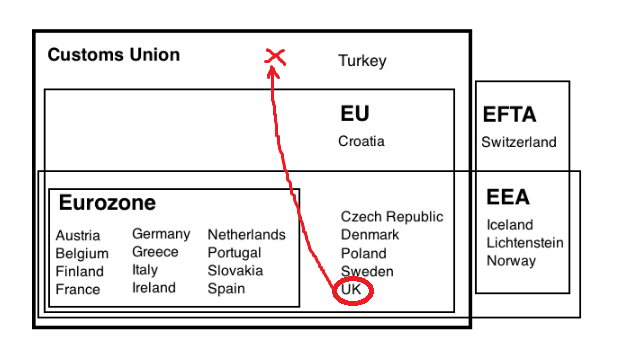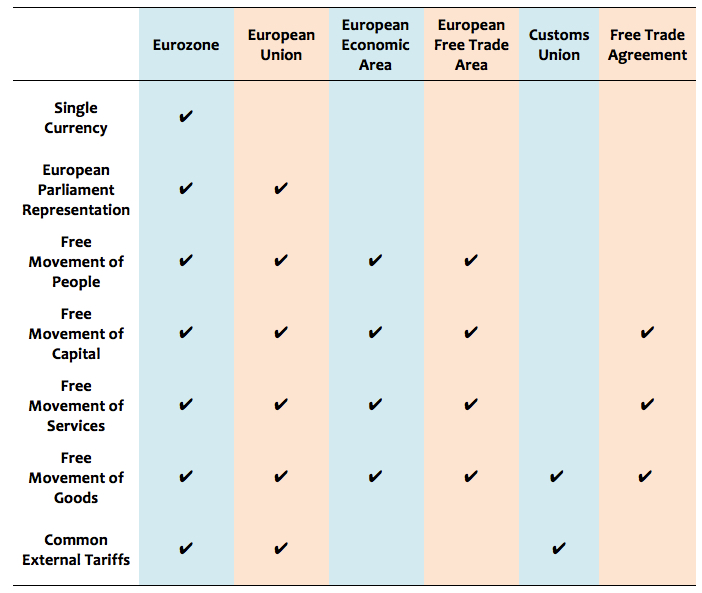
Earlier this month, British Prime Minister Theresa May'sannounced her Brexit strategy of retaining membership in Europe's customs union, which to many is a signal for a hard exit.
For a brief understanding of the issue, we have tried to simplify and summarise the main levels of economic integration that exist in Europe, and where customs union stands. (For clarity, we have omitted several economic groupings and countries)
Eurozone: The Eurozone is the deepest level of European integration. It includes:a monetary union based on the euro currency, four freedoms' of economic activities (goods/services/people/capital movements), national representation in a parliament to agree on laws related to these activities among others, and common external trade policy. Legislation in European parliaments covers justice, trade, agriculture, fisheries, and regional development. Eurozone countries include the major economies of Germany, France, Italy, Spain and the Netherlands.
European Union:members do not use the euro and maintain national currencies, but otherwise have the same commitments as the Eurozone members.
The EU Single Market (EEA) guarantees free movement of the four factors of production, though agriculture and fisheries are not covered (which was seen as an important carve out for the Norwegian fishing industry). EEA agreements require continuous updating so they accord with EU laws on competition, consumer protection, company and employment law, and the environment among other matters. EEA members have no formal input to the creation of these EU laws. The single market includes all EU members and several neighbouring EFTA countries. [Croatia is provisionally participating as it awaits official acceptance.]
European Free Trade Area (EFTA) is similar to the EEA, but with a narrower scope. Switzerland instead has a series of narrowly defined, mutually dependent bilateral agreements on a limited number of areas such as technical barriers to trade, public procurement, security etc. Effectively Switzerland is an EEA member in most regards, and pays into various EU funds as EEA members do. It also has no decisionmaking power into EU laws or regulations.
A referendum in February 2014 to impose quotas on European immigrants to Switzerland has not yet been enacted, but it would trigger the guillotine clause', that breaking the rules of one treaty voids all others. European governments are still contemplating how to effectively implement this referendum.
EU Customs Union: covers only the movement of goods that may travel within the area customs-free, and imposes common external tariffs on all goods coming in. Turkey's agricultural products are excluded.
A free trade agreement (FTA) could be designed to deliver high liberalisation of goods, services and capital, while avoiding the vexing issue of migration. Modern agreements such as the TPP and EU-Canada are untested but highly comprehensive, and could neutralise much of the economic impact on the UK and EU. Note, however, that the EU-Canada agreement just got sent back to 27 national level parliaments for approval in addition to the EU parliament where, after years of delay, it faces a more perilous and uncertain future.

Thisis an adapted version of an article written by Jack Coleman, an MPP student the Lee Kuan Yew School of Public Policy, and first published by Asia Trade Centre on 19 July 2016. It has been edited by Shinae Baek.